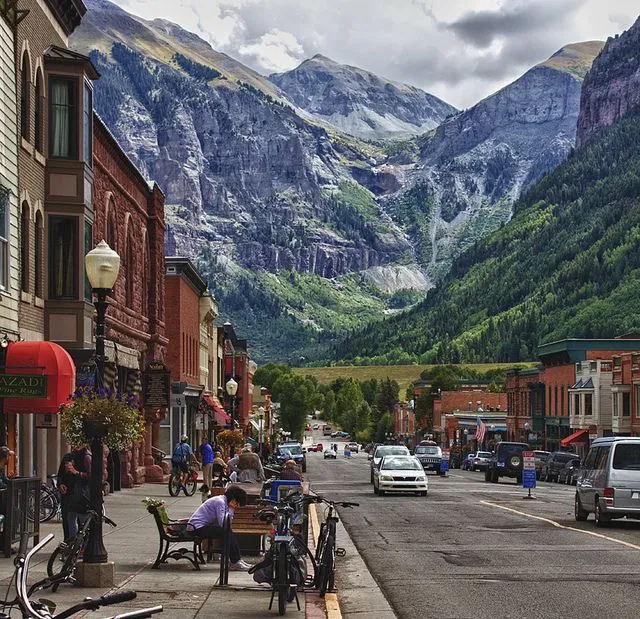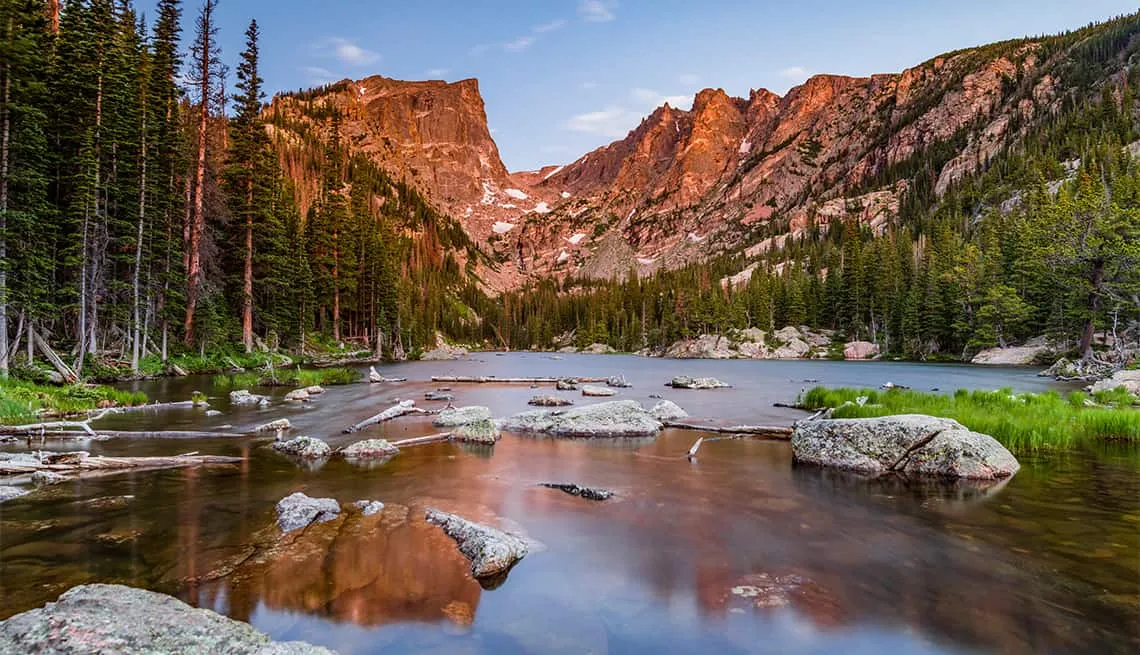Colorado, the gem of the United States, is renowned not only for its magnificent natural landscapes but also as a paradise for those passionate about conquering heights. From the majestic Rocky Mountains to year-round snow-capped peaks, Colorado promises unforgettable experiences for every traveler. This article serves as the most detailed guide to visiting the highest peaks in Colorado, helping you explore and conquer the “roof of the Rockies” state.
Colorado, with its unspoiled and majestic natural beauty, is an ideal destination for those who love exploration and adventure. From towering mountains to winding trails, every corner of Colorado holds wonders waiting to be discovered. Join us as we explore the highest peaks in Colorado and plan a memorable trip!
1. Overview of Colorado’s High Mountain Terrain
Colorado proudly boasts 58 mountain peaks over 14,000 feet (4,267 meters), often referred to as “Fourteeners.” The diverse high mountain terrain not only creates spectacular scenery but also offers countless opportunities for outdoor activities such as mountaineering, hiking, skiing, and camping.

2. Most Famous “Fourteeners” in Colorado
2.1. Mount Elbert: Colorado’s Highest Peak
At 14,433 feet (4,401 meters), Mount Elbert is not only the highest peak in Colorado but also the second-highest in the Rocky Mountains. This mountain is relatively easy to climb, suitable for beginners as well.

2.2. Mount Massive: The Second Largest Mountain
Ranking second in height in Colorado at 14,428 feet (4,398 meters), Mount Massive truly lives up to its name. With its vast area and numerous sub-peaks, Mount Massive offers an exciting climbing challenge.
2.3. Mount Harvard: Classic Beauty
Mount Harvard, at 14,421 feet (4,395 meters), is one of the most beautiful peaks in Colorado. With its gentle slopes and stunning views, Mount Harvard is an excellent choice for experienced climbers.
2.4. Blanca Peak: Sacred Symbol
Blanca Peak, at 14,345 feet (4,372 meters), is not only a high mountain peak but also a sacred site for many Native American tribes. Climbing Blanca Peak is not just a physical challenge but also a profound cultural experience.
2.5. La Plata Peak: Hidden Gem
La Plata Peak, at 14,336 feet (4,370 meters), is a hidden gem of Colorado. With its lesser-known trails and pristine landscapes, La Plata Peak is an ideal choice for those who want to escape the crowds.
3. Planning Your Visit to Colorado’s Peaks
3.1. Ideal Time to Visit
The best time to climb mountains in Colorado is from mid-June to mid-September, when the weather is warm and there is less chance of snowstorms. However, you still need to prepare for sudden weather changes and bring adequate protective gear.
3.2. Physical Fitness and Skills Preparation
Mountaineering requires good physical fitness and basic climbing skills. Train regularly before your trip and acclimatize to the altitude. If you are a beginner, consider taking a mountaineering course or hiring a professional guide.
3.3. Essential Equipment
- Professional mountaineering boots
- Layered clothing for warmth and waterproofing
- Backpack for water, food, and essentials
- Map, compass or GPS
- Sunscreen, sunglasses, and hat
- First aid kit
3.4. Safety First
- Always check the weather forecast before heading out
- Climb with a partner and inform someone of your plans
- Drink enough water and eat enough to maintain energy
- Pay attention to signs of altitude sickness and hypothermia
- Do not litter and respect the natural environment

4. Other Activities to Combine with Mountain Visits
In addition to mountaineering, you can combine your trip with other exciting activities such as:
- Hiking: Colorado has countless hiking trails suitable for all levels.
- Camping: Enjoy a wonderful night under the stars at one of Colorado’s beautiful campgrounds.
- Skiing: In winter, Colorado becomes a skiing paradise with many world-class resorts.
- Visiting mountain towns: Explore charming towns like Aspen, Vail, and Telluride.
- Hot springs bathing: Relax and rejuvenate at one of Colorado’s natural hot springs.
5. Important Notes When Visiting Colorado’s Peaks
- Altitude sickness: This is a common problem when climbing at high altitudes. Symptoms include headache, nausea, dizziness, and fatigue. To prevent it, ascend slowly, drink plenty of water, and avoid stimulants like alcohol and caffeine.
- Changing weather: Mountain weather can change very quickly. Be prepared for all situations and bring appropriate clothing.
- Wildlife: Colorado is home to many wild animals such as bears, deer, and mountain lions. Keep a safe distance and do not feed them.
- Environmental protection: Keep the mountains clean and do not litter.
6. Conclusion
Conquering Colorado’s highest peaks is a challenging but incredibly memorable experience. With careful preparation and an adventurous spirit, you will have the opportunity to discover stunning landscapes and challenge your limits. We hope this guide to visiting the highest peaks in Colorado will help you plan a successful and safe trip! Remember, perseverance and passion will be the keys to conquering every peak. Wishing you a wonderful journey of discovery in Colorado!